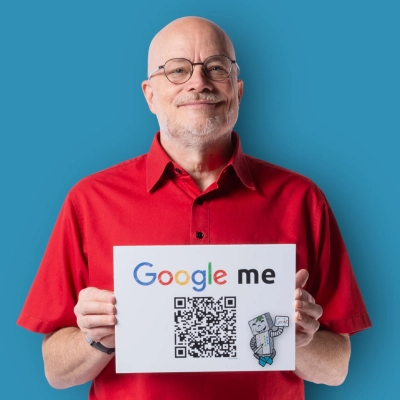How to Adapt Content Marketing Strategies: Real-World Examples
Content marketing strategies are constantly evolving, and staying ahead of the curve is crucial for success. This article delves into real-world examples of how businesses have adapted their content marketing approaches to meet changing demands. Drawing insights from industry experts, these case studies offer valuable lessons for marketers looking to refine their strategies.
- Pivot to Trust-Building Documentary Content
- Crisis Sparks Multi-Format Audience-First Approach
- Pandemic Shifts Focus to Practical Solutions
- Adapting Strategy to Highlight AI Integration
- Empathy-Driven Content Revives Barbershop Business
- M&A Surge Prompts Actionable Content Shift
- Distributed Content Model Boosts Engagement
- Diversify Platforms to Recover Lost Views
- Wellness Focus Increases Organic Traffic
- Brand SERP Optimization Saves Business
- Educational Approach Trumps Product Focus
- Evergreen Content Turns Downtime Productive
- Pivot to English Content Accelerates Growth
- Paid Campaigns Offset Algorithm Changes
- Storytelling Builds Hype for Delayed Launch
- Quick Pivot Capitalizes on Industry Trends
- Micro-Niche Focus Recovers Traffic Loss
- Restructuring Content for AI Discoverability
- Digital Pivot Exceeds Lead Generation Goals
- Local Sourcing Series Expands Market
- Modular Content Enhances Campaign Resilience
- Targeted Landing Pages Boost Conversions
- Data-Driven Email Strategy Improves Engagement
- Rapid Response to Regulation Changes
- Creator-Led Storytelling Outperforms Projections
Pivot to Trust-Building Documentary Content
In late 2022, a financial client had to pull a product feature just days before a new nurture sequence was set to launch. Fourteen emails and several lead magnets had already been built around that feature, so the entire campaign became unusable almost overnight.
With only ten days left, the strategy had to shift. Instead of trying to repurpose content that no longer made sense, we looked for a new angle. That's when we found a deeper insight from customer support conversations. People weren't confused about the product. They didn't trust the category.
So that changed everything. The new approach focused on building trust. A short documentary-style video featuring a real client story replaced the original lead magnet. That footage was then broken down into shorter clips for ads and social media.
The email sequence was rewritten to prioritize transparency, proof points, and independent reviews. Ad copy shifted tone because we wanted to lean into the skepticism people already had and show how the company was addressing it.
Open rates dipped slightly, but click-through rates nearly doubled. Cost per acquisition dropped by 46 percent compared to previous campaigns. What started as a last-minute adjustment ended up outperforming the original plan.
Adapting in this case wasn't about tweaking. The context had shifted too much, so starting over ended up being faster and more effective than trying to force the old story to fit.

Crisis Sparks Multi-Format Audience-First Approach
Last spring, I spent weeks crafting a 30-day, five-blog rollout for The Instant Pricing Fix™—complete with SEO deep-dives and Pinterest pins—when, two days before launch, our web host suffered a major outage that took every site offline. Instead of waiting for IT to restore service, I pivoted on the fly: I turned each drafted blog post into a live, 15-minute "Pricing Fix Flash" webinar, promoted via email and our private Slack community, and repurposed the core takeaways into daily 60-second Reels.
The result was better than I'd dared hope: 150 people showed up live, our email open rates soared to 72%, each Reel averaged 18K views, and we closed eight early-bird sales, nearly matching our original blog-based projections. More importantly, our community engagement spiked, proving that a multi-format, audience-first approach can not only salvage a crisis but turn it into a higher-impact launch.

Pandemic Shifts Focus to Practical Solutions
At the start of the pandemic, our customers' priorities shifted overnight, and our content strategy followed that lead. We had a calendar filled with tutorials, thought leadership, and lead-generation campaigns. As our SME clients became flooded with operational challenges, it became clear that our existing content was no longer in tune with their priorities.
It wasn't that we hadn't been listening to what our clients needed. It was just that the context changed drastically, so they suddenly needed something else. Every type of client interaction (support tickets, forums, and calls) revealed a clear demand for practical communication solutions over sales content.
So we paused and rebuilt our content around emergency communication. We started creating crisis SMS templates, internal alert guides, and webinars on how to manage remote teams. Our content tone started focusing on empathy more than ever. We began addressing the realities our customers were facing, not just serving their long-term goals.
This change was essential for staying relevant in a market dominated by uncertainty. Aligning with our audience's reality helped build trust and foster long-term relationships. Nestlé's use of TextMagic during the pandemic is a strong example of how we made the crisis work for, not against us. We helped them issue urgent factory updates to thousands of employees in minutes to keep up with safety and compliance standards.
This experience reminded us that effective content marketing isn't necessarily about sticking to a plan, especially when things change overnight. It only works when it evolves with your audience's needs, and sometimes those needs undergo a 180-degree turn faster than you had anticipated.

Adapting Strategy to Highlight AI Integration
Due to the advent of AI, we have had to change our marketing strategy. One day, we woke up and realized that rather than being a highly differentiated content and strategy machine, we were now in a world where the playing field had been leveled.
As a result, we have pivoted our own content marketing strategy. Instead of highlighting our creative prowess, we are now emphasizing our experience and knowledge of what makes great content work, and how to measure its effectiveness - awareness, engagement, and sales lifts.
By positioning our fractional digital strategist, Ting Ting Yan, as a thought leader and showcasing her expertise, we have seen a strong positive response from both clients and the market.
AI is being thoughtfully integrated into our content creation process where useful, and we are marketing ourselves accordingly. We are not running from AI, but we are not changing our business model either. Each new wave of technology that emerges becomes another tool for us to use. We know we add value to our clients.
As long as we are always thinking about how to differentiate ourselves from the competition while staying adaptable, our strategy remains consistent; only the variables change. Our team has quickly, within weeks, been able to redirect our narrative to highlight tact, efficiency, and effectiveness over flashy content.

Empathy-Driven Content Revives Barbershop Business
Hi,
The best content strategies don't live in spreadsheets; they live in reality.
One example that stands out for me is when we worked with Mes Amis Barbershop. Their original strategy leaned heavily on local walk-ins, but when lockdowns hit, foot traffic dropped to almost zero. We had to pivot fast.
Instead of chasing generic "haircut" keywords, we produced content around DIY grooming and at-home care, then internally linked those posts to booking pages for virtual consultations. Within three months, organic traffic jumped 68%, and bookings recovered even while chairs in the shop stayed empty.
That was proof that content can't just sell—it has to adapt to what people are actually facing day to day.
Interestingly, the U.S. Bureau of Labor Statistics reported that barbers and stylists were among the hardest hit service jobs during that time, which only magnified the challenge.
By shifting content toward empathy-driven topics, not hard sells, Mes Amis not only kept clients engaged but grew their email list by 2,000 subscribers in the process.
Strategy isn't static. The moment you stop listening to the real-world problems your audience has, your content turns into wallpaper.

M&A Surge Prompts Actionable Content Shift
When a surge of mergers and acquisitions swept through the banking sector, our content strategy—rooted in high-level thought leadership—wasn't meeting the moment. Buyers needed more than theory; they needed tangible guidance on navigating the operational realities of consolidation.
We zeroed in on one area often overlooked in M&A conversations: the critical role contact centers play in maintaining customer relationships, ensuring compliance, and preserving brand reputation during transitions. To make that message resonate, we engaged in-house veterans who had first-hand experience managing these challenges. Their stories and insights anchored a new wave of content that was practical, scenario-based, and immediately actionable.
Webinars became more interactive, with polls, live Q&A, and real-world case discussions that gave attendees space to surface their own challenges. We paired those events with downloadable playbooks that broke down integration best practices, providing step-by-step guidance on aligning people, processes, and technology in the wake of a merger.
The shift paid off—engagement metrics rose sharply, webinar attendance increased, and the playbooks became a top-performing lead asset. More importantly, we positioned the brand as a trusted partner that not only understood the theory of M&A but could also equip buyers with the tools to navigate it successfully.

Distributed Content Model Boosts Engagement
While we were being supported, this included having a key team member who managed our content creation process leave during an incredibly busy period, forcing us to quickly change course in terms of how we approached our strategy for delivering said content — from centralized to distributed. This unexpected shift in personnel required establishing new realities almost immediately with both pen and editorial sword to keep up with content expectations and deadlines without overburdening those who remained.
Prior to moving Vox in-house, we used a central content manager to organize topic selection, editorial calendars, and ensure uniform quality for all materials that were sent through. After she left unexpectedly with little notice, we were faced with the daunting task of continuing content creation for over 25 clients without a new person to hire and train yet. This led us to shift into a collaborative content model where account managers would submit topic ideas based on their client interactions, our SEO specialist focused on keyword research and optimization, and a project coordinator managed the publication schedule among all parties involved.
In fact, this distributed method improved content quality because account managers who spoke directly with clients found better topic suggestions than central planning had. Posts answered the real questions and challenges that account managers came across in regular client conversations, and we saw a 75% spike in client engagement with our content. Ultimately, this personnel crisis exposed the fact that a distributed system of content creation often delivers much more genuine, client-focused materials than centralized systems, which end up divorced from the actual needs and wants of clients.

Diversify Platforms to Recover Lost Views
In mid-2024, one of my e-learning clients saw YouTube views drop by 40% almost overnight after an algorithm change. Their how-to videos weren't showing up in "Recommended" feeds anymore, and this put a seasonal course launch at risk. We had to move fast. So within two days, I checked YouTube analytics to see which videos were hit hardest. We took the best-performing clips and repurposed them into short, vertical videos for TikTok, Instagram Reels, and LinkedIn.
We also changed our YouTube approach to target search traffic, using keywords from Google Trends and VidIQ, instead of relying on suggested views. At the same time, we sent email and newsletter blasts to our existing audience to drive direct traffic. Within 30 days, we recovered about 75% of lost views and gained a more diverse audience. Around 20% of new course buyers came from TikTok and Instagram, channels that previously brought in almost nothing.

Wellness Focus Increases Organic Traffic
During the early months of the pandemic, we noticed a sudden drop in engagement on our usual product-focused content. People were anxious and looking for comfort, not sales pitches, so we shifted gears quickly. I redesigned our content calendar to focus on wellness tips, stress relief routines, and remote self-care using our massagers.
We also collaborated with physical therapists for expert-driven content, which boosted our credibility and SEO. The result was a 38% increase in organic traffic within two months and a stronger emotional connection with our audience.

Brand SERP Optimization Saves Business
When I pivoted to digital marketing in 2012, my online presence was dominated by my previous career as the voice-over artist for Boowa, a cartoon blue dog. I had a seriously enormous credibility gap. Potential clients would Google my name after meetings and decide against signing deals because my expertise appeared to be limited to cartoons. Cumulatively, that misrepresentation lost me deals worth over a million dollars.
So, I pivoted my entire marketing strategy to focus on Brand SERP Optimization - improving the search results for my own name. By strategically publishing content that reinforced my identity as a digital marketing expert, I changed Google's perception. After a few months, I had a positive, accurate, and convincing Brand SERP that reassured prospects during their BoFu due diligence... and that saved my business.

Educational Approach Trumps Product Focus
I remember a challenging time when our main competitor suddenly launched a new product. The product and content campaign were almost the same as ours, and it happened just weeks before our own planned release. Our entire strategy was at risk of being seen as a copycat.
The adjustment we made:
We immediately paused our product-focused content. Then, we took an educational and thought-leadership approach by creating a series of webinars and in-depth articles. All of them focused on the bunch of industry problems that our product was designed to solve. We positioned our product and the brand as a knowledgeable partner rather than another vendor.
The outcome:
The approach worked better than we imagined it would. It not only helped in avoiding direct competition but also built a stronger and more trusted relationship with our audience. I learned that agility and focusing on providing true value is the most effective strategy. Especially in challenging and unexpected circumstances, it is crucial.

Evergreen Content Turns Downtime Productive
When our team faced unexpected downtime with our intern workforce during slow periods, we needed to quickly pivot our content strategy to maintain productivity. We developed what we called an "evergreen intern outreach campaign" that transformed these potentially unproductive periods into valuable content creation opportunities. Our approach shifted to having interns create always-on video content that specifically addressed persistent business pain points our clients frequently encountered. What started as a solution to an immediate staffing challenge evolved into one of our most consistent lead generation sources. The campaign ultimately delivered high-quality leads while simultaneously providing meaningful work experience for our interns, creating a win-win situation for both our business and our temporary team members.

Pivot to English Content Accelerates Growth
When expanding our brand internationally, we initially invested heavily in native language materials and alternative communication channels based on our assumptions about local market preferences. After monitoring engagement metrics, we discovered that our target audience of senior B2B professionals actually responded equally well to English content and traditional communication methods like email. We quickly pivoted our strategy to reallocate resources toward improving our core English content while maintaining only essential localization, which ultimately improved our ROI and accelerated our international growth.

Paid Campaigns Offset Algorithm Changes
A significant moment when I had to adapt my content marketing strategy occurred during a major algorithm change on a social media platform. We had been relying heavily on organic reach through engaging posts, but the new algorithm drastically reduced visibility for non-paid content.
Recognizing the need for a shift, I pivoted our strategy to focus more on paid advertising and targeted campaigns. We also began creating high-quality, shareable content that encouraged user interaction, such as polls and contests, to boost organic engagement.
As a result, our paid campaigns not only compensated for the drop in organic reach but also led to a 30% increase in overall engagement and conversions. This experience reinforced the importance of staying agile and responsive to changes happening on social media.

Storytelling Builds Hype for Delayed Launch
A couple of years into Cafely, we'd set our big spring campaign, and all the planning was done. Product photography was ready to go, copywriting was done, and everything was set. However, a supply chain delay occurred, and the new coffee line wasn't going to arrive for at least a few weeks. I couldn't simply click "go" on the ads for a product we didn't even have, so I abandoned the calendar we'd worked so hard to create and shifted gears entirely to storytelling.
Rather than promoting products we knew we couldn't sell, we launched a sequential "behind-the-brand" content series, telling stories about our farms. We showcased our roasting process and shared some valuable tips for home brewing for the at-home barista. Although it was not the original plan, it kept our audience engaged, provided them with valuable content, and helped them feel connected to our brand. When the new line finally launched, the hype we created helped us sell out the first run in under 48 hours. That was a lesson that flexibility is not merely a safety net but sometimes can be the thing that makes your campaign more successful.

Quick Pivot Capitalizes on Industry Trends
When our team noticed an unexpected industry policy change dominating LinkedIn conversations, we quickly realized our planned content campaign would be overshadowed. We made the strategic decision to pause our original campaign and pivot our content strategy to address the policy change that everyone was discussing. Our approach involved reframing our content to join the trending conversation while having our leadership team share timely insights backed by relevant data points. This quick adaptation allowed us to remain relevant during a rapidly evolving situation rather than pushing messages that would have been ignored. The results were remarkable, with our engagement metrics tripling compared to our typical content performance and our brand being positioned as both proactive and in touch with industry developments.

Micro-Niche Focus Recovers Traffic Loss
When Google released their core algorithm updates in March 2024, our content marketing strategy required immediate adaptation. Our team responded by conducting comprehensive content audits across our digital properties and significantly enhancing both the quality and depth of our existing materials. We made the strategic decision to narrow our focus to a specific micro-niche where we could establish greater authority rather than trying to maintain broad coverage. This targeted approach allowed us to create more comprehensive content that directly addressed our audience's specific needs and questions. The results validated our quick pivot - after initially experiencing concerning traffic drops, we successfully recovered and grew our monthly visitors from essentially zero to between 15,000 and 20,000. This experience reinforced that sometimes unexpected challenges create opportunities to refine your strategy and ultimately achieve stronger results.

Restructuring Content for AI Discoverability
A recent shift forced me to rethink our entire content playbook at Centime. We realized more of our buyers were discovering information through AI-generated answers rather than traditional search. It was no longer sufficient to simply "rank on Google." Our content had to be structured so tools like ChatGPT, Gemini, or Perplexity could parse and surface it effectively.
This meant:
1. Stripping out long introductions
2. Breaking ideas into one clear fact per paragraph
3. Writing headers that match how someone would ask a question out loud
For example: "How do I automate invoice approvals in NetSuite?" instead of "The Future of Accounts Payable."
We also started incorporating specifics that AI systems latch onto:
• Product names
• Integrations
• Certifications
• Concrete stats from our customers
After reformatting key blogs in this way, we observed a noticeable uptick in impressions and referral traffic from AI-driven search engines, not just Google.
The big learning: Adapting content to how machines retrieve it is just as important as making it engaging for humans. When done right, you win both audiences.
Digital Pivot Exceeds Lead Generation Goals
While at OSSIO, our marketing plan for a new orthopedic product launch was built around live surgical demos at conferences. When an unexpected industry-wide event canceled in-person gatherings, we had to pivot quickly.
We transformed our content strategy into a fully digital campaign—creating surgeon-led video walkthroughs, interactive 3D product visualizations, and patient testimonial clips. We amplified these across LinkedIn, targeted email campaigns, and medical forums.
The result: we exceeded our initial lead-generation target by 28% and built an enduring library of digital assets that continued driving engagement long after the launch.

Local Sourcing Series Expands Market
Hello,
When international shipping delays disrupted our stone inventory during a key season, we pivoted from promoting products to educating designers on sourcing alternatives. Instead of going silent, we launched a "Behind the Quarry" series highlighting local U.S. suppliers, rare domestic stones, and the craftsmanship behind each piece.
This shift not only maintained brand momentum, it actually expanded our market. Architects who never considered local stone started requesting custom U.S.-sourced options. The result: a 22% lift in domestic sales and deeper trust from trade clients who now view us as both global and adaptable.
Sometimes the best strategy is showing them how you solve problems in real time.
Best regards,
Erwin Gutenkust
CEO, Neolithic Materials
https://neolithicmaterials.com/

Modular Content Enhances Campaign Resilience
We had invested months in an email automation series for a B2B SaaS brand targeting small manufacturers. Just before launch, a key customer segment changed platforms, rendering some integrations irrelevant. Rather than abandon the campaign, we created modular content blocks that could adapt based on user segmentation. We also recorded short video versions of key emails to increase accessibility and emotional resonance.
The pivot made the campaign more resilient, allowing future updates without a complete overhaul. Even better, it opened the door to a new format strategy we now use for other clients. Sometimes unexpected friction reveals a smarter long-term structure you never considered. That modular system has since become a core feature of our B2B content approach.
Targeted Landing Pages Boost Conversions
We've learned over time that a content strategy must be as agile as the market it serves. There was a period when our primary focus was on long-form blog content, which was excellent for building brand authority and driving organic traffic. We were getting many eyes on our work, but we noticed that this traffic wasn't translating into the conversions we needed. It was a good first step, but it wasn't closing the deal. We realized we were giving away too much information without a clear path for the reader to take the next step.
To adjust, we made a decisive pivot away from our blog-heavy approach. We shifted our focus to creating highly-targeted landing pages. Each page was designed for a specific purpose, such as showcasing a single product or offering a valuable download in exchange for an email address. We cut out all the distractions—no more lengthy navigation menus or multiple calls to action. We focused on a single, compelling message and a clear, unmissable button. The outcome was exactly what we'd hoped for. Our overall website traffic didn't necessarily skyrocket, but the quality of the traffic improved dramatically, and our conversion rates increased significantly. It's proof that sometimes, less truly is more, especially when you're trying to guide someone to a specific action.
Data-Driven Email Strategy Improves Engagement
When our email marketing campaign began showing unexpectedly low open rates, we quickly recognized the need to revamp our approach. Our team implemented a comprehensive A/B testing strategy for subject lines while simultaneously incorporating personalized elements such as the recipient's name and company information to create more relevant connections. We also conducted thorough data analysis of user engagement patterns, which allowed us to refine our content strategy and delivery timing based on actual user behavior rather than assumptions. The results were significant - our open rates increased substantially, and we saw improved engagement across all key metrics. This experience reinforced the importance of being responsive to performance data and willing to adjust strategies when initial approaches aren't delivering expected results.
Rapid Response to Regulation Changes
One example at DesignRush occurred during a sudden industry-wide regulation update that rendered several planned content campaigns irrelevant overnight. Previous case studies and thought leadership regarding marketing compliance tools were discussed, but the new rules changed everything.
We rapidly changed our course by keeping an eye on social media and search trends in real-time, determining what our audience was worried about and what problems they were facing, and creating content that directly addressed those issues, such as webinars, blog guides, and infographics that showed how to adapt to compliance. We also employed AI-powered content tools to repurpose old assets, which sped up production without lowering quality.
Engagement with the new material increased by more than 50% compared to our prior campaigns, and we obtained a few high-value leads that we could have lost if we had followed the original plan. In content marketing, being excessively rigid can make things less relevant, and quickness and audience attunement are sometimes more crucial than perfection.
I think that too many businesses make content schedules as if the markets don't change. Adaptive content marketing is the best way to go. It means that every campaign has built-in monitoring, quick changes, and real-time intelligence.

Creator-Led Storytelling Outperforms Projections
Last year, we were mid-launch on a global streetwear campaign when a major cultural event shifted the tone of the entire conversation overnight. The original work was high-energy and irreverent. Suddenly, that tone would have felt tone-deaf.
We scrapped two weeks of content in 48 hours. Instead, we pivoted to creator-led storytelling that tapped into the cultural moment with empathy and authenticity. We shifted budget from high-gloss production to nimble, social-first video that could be turned around in hours.
The result was a campaign that not only stayed relevant but outperformed our original projections by 27 percent in engagement. More importantly, it strengthened the brand's credibility because we proved we could listen, adapt, and respond in real time.
The lesson: the best content strategies are built for speed and flexibility, not just polish. Culture moves fast. Your marketing has to move faster.
Steve Rock is the Chief Creative Officer for Good Kids. We're a playground for big ideas. We help brands like Nike, Netflix, Adidas, and Red Bull move fast and make noise with bold, culturally driven ideas that actually work in the real world.






